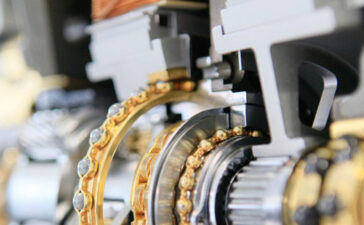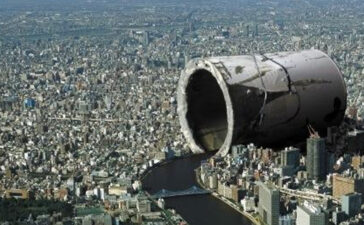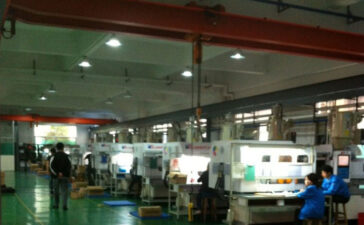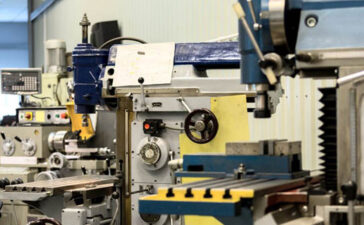We may encounter such and other problems in the structural design of plastic mold products. Now we will summarize and share with you through years of experience. Common sense of plastic parts design Generally, there are the following items in the design process of plastic parts:
- a The thickness design of the wall thickness of the plastic parts! (tell your reason)
- b. Design of reinforcing ribs for plastic parts
- c. Design of plastic screw column (self-tapping)
- d. Plastic parts stop, beautiful line design!
- e. The principle of plastic material selection
1. If the wall thickness is too thick
It is easy to waste materials, increase costs, and more importantly, prolong the cooling and solidification time, which is easy to produce dents, shrinkage holes, sandwiches and other quality defects. , So it should be uniform, the thickness of the wall and the wall connection should not be too different, and the arc connection should be used as much as possible, otherwise it is easy to open the row. Generally 1~5MM, small parts are 1.5~2.5, large parts are 3~10`MM
2. The height of the stiffener is usually about 3 times the wall thickness of the plastic part, and has a demoulding angle of 2 to 5 degrees.
The connecting out and ends of the wall shall be connected by a circular arc. Prevent stress concentration. , The thickness of the ribs should be plastic parts
1/2 of the wall thickness, if it is too large, it is easy to dent.
If multiple ribs are to be set, the distribution should be staggered to prevent cracking
2. The thickness basically depends on the structural strength requirements and the height of the drop test.
If its own strength is insufficient, how can it support the parts? For example, the front frame of the TV is not strong enough to move on the assembly line after installing the picture tube. But this thickness depends on experience.
Let me start with a failed example. This is a controller panel. The final product is 8 stacked in a chassis (the structural part in the figure is omitted). Because this is my first product design, I don’t have much experience. I opened the mold after repeated checks and no problems were found in the first sample. However, as soon as the whole machine was assembled, trouble came-between the controller and the controller. There is a gap of about 3mm! It is terribly ugly, it is simply a waste product. You can imagine how cold wind I was at that time. The reason is actually simple. My draft angle is set to 2 degrees, so that the difference between the bottom and the upper part is 0.7mm due to the slope, and the two sides are 1.4mm. However, the mold factory has not considered shrinkage, and the size is simpler than the drawing size. The sides are 0.2mm less and the sides are 0.4mm, so the plastic part itself creates a gap of 1.8mm, plus the chassis itself is designed with a spacing of 1mm, so a large gap of 2.8mm comes out!
Lesson: Before setting the draft angle, not only the injection molding process requirements must be considered, but also other undesirable “sequelae” arising from this must be considered.
A written discussion on the structural design of plastic mold products
3. Considerations for selecting materials
In the early stages of designing any industrial product, it must involve consideration of the selection of forming materials. Because in the production, assembly, and completion time of the product, materials have a mutual influence relationship. In addition, the level of quality certification, market sales and price determination also need to be considered. Therefore, it is impossible to use general considerations to determine a systematic approach to determine the optimal material and production process.
4. Characteristics of different materials
ABS
Uses: toys, cabinets, daily necessities
Features: Hard, not fragile, can be glued, but it may appear on the edge when damaged.
Design application: Mostly used in toy shells or parts that are not subject to force.
PP
Uses: toys, daily necessities, packaging plastic bags, bottles
Features: Flexible, strong toughness, high extensibility, but no glue.
Design application: Mostly used in places where parts are to be disassembled due to drop test.
PVC
Uses: soft pipe, hard pipe, soft board, hard board, wire, toy
Features: Soft, tough and elastic.
Design application: Mostly used in toy figure, or some places that need shock absorption or shock absorption.
POM
Uses: mechanical parts, gears, levers, home appliance housings
Features: wear-resistant, hard but fragile, easy to have favorable edges when damaged
Design application: Mostly used in rubber gears, pulleys, and some places that need to be driven and bear high torsion or stress.
Nylon
Purpose: gears, pulleys
Features: Tough, water-absorbing, but becomes fragile when the water is completely evaporated.
Design application: Because the accuracy is difficult to control, it is mostly used for gears with larger modules.
Kraton
Purpose: Motor pad
Features: Soft, flexible, high toughness, and strong extensibility.
Design application: Mostly used as a motor pad to absorb motor vibration and reduce noise.
The size of the wall thickness depends on the external force that the product needs to bear, whether it is used as a support for other parts, the number of supporting columns, the amount of extension, and the plastic material selected. The wall thickness design of general thermoplastics should be limited to 4mm. From an economic point of view, too thick product design not only increases material costs, prolongs the production cycle (cooling time), and increases production costs. From the perspective of product design, a thick product increases the possibility of creating voids (pores), which greatly weakens the rigidity and strength of the product. The most reasonable wall thickness distribution is undoubtedly the uniform thickness of the cut surface in any place, but it is always inevitable to change the wall thickness in order to meet the functional requirements. In this case, the transition from thick rubber to thin rubber should be as smooth as possible. Too sudden wall thickness transition will cause dimensional instability and surface problems due to different cooling rates and turbulence.
5. The common wall thickness of different materials affects the plastic mold
- ABS:Generally, the first choice of material, the wall thickness is usually 1, 1.2, 1.5, 2, 2.5, 3mm, depending on the size and function of the product.
- PP:Because it is soft and due to shrinkage, it should not be too thick, generally 1, 1.2, 1.5mm.
- PVC:Because the figure is mostly solid, it is not very restrictive.
- POM:Generally 1, 1.2, 1.5, 2, 2.5, 3mm depends on the size of the product.
- Nylon:Because the shrinkage rate is relatively high, the ratio of average material thickness to bones can be relatively small.
- Kraton:Because most of them are used as motor mats or non-exposed parts, there is little restriction. Reinforcing ribs are an indispensable functional part of plastic parts. Reinforcing ribs effectively increase the rigidity and strength of the product like an I-shaped iron without greatly increasing the cross-sectional area of the product, but it does not have the shape problem of an undercut difficult to form like an I-shaped iron. Some people are often subjected to pressure and torsion. , Curved plastic products are especially suitable. In addition, the ribs can also act as internal runners to help fill the mold cavity, and play a great role in helping plastics flow into the branches of the part.
Reinforcing ribs are generally placed on the non-contact surface of plastic products, and their extension direction should follow the direction of the maximum stress and maximum deviation of the product. The choice of the position of the ribs is also subject to some production considerations, such as cavity filling, shrinkage and Demoulding etc. The length of the ribs can be the same as the length of the product, and the two ends can be connected to the outer wall of the product, or only occupy the length of the product part to locally increase the rigidity of a certain part of the product. If the rib is not connected to the outer wall of the product, the end part should not stop suddenly. The height should be gradually reduced until the end, so as to reduce air trapping, filling dissatisfaction and scorch marks. These problems often occur in Insufficient exhaust or closed locations. And because of shrinkage, the thickness of the bones cannot be greater than the average wall thickness. General design method: average wall thickness’0.65~0.7
My overall view on the thickness of the material is: it can be thin or not, but different products should be treated differently. But an important problem is to try to keep the average material thickness. When the average material thickness cannot be maintained, let Excessively maintain smoothness. Because every time the plastic flows through a turning zone or material thickness change area, there will be a pressure loss (equivalent to an increase in injection pressure). And it is prone to shrinkage defects. It should be avoided as much as possible. Especially for materials with poor fluidity like PC More attention should be paid.







